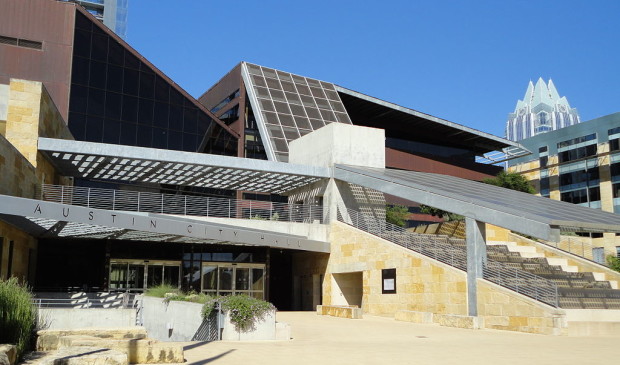City discovers problem with homestead districts
Friday, January 20, 2017 by
Jo Clifton Since 2007, Austin has attempted to create several homestead preservation districts in low-income areas in order to fund more affordable housing and help people living below the poverty line stay in their homes. However, only one – District A – has been completed and funded.
District A, which includes parts of Council districts 1, 3 and 9, was designated as a tax reinvestment zone in 2015. It comprises Upper Boggy Creek, Central East Austin, Chestnut, Rosewood, Holly and the East Cesar Chavez neighborhood planning areas, as well as parts of Govalle.
Also in 2015, City Council passed a resolution directing city staff to work on establishing three additional districts, with staff giving no indication that there would be a legal problem in doing so.
But now, according to staff, those districts – designated as B, C and D – are void because they do not meet the criteria set forth in the state law allowing for their creation. The problem, like others that have come before it, can presumably be fixed with legislation.
Homestead preservation districts have a long and complicated history in Austin. Beginning in 2005, state Rep. Eddie Rodriguez (D-Austin) sponsored legislation that became Chapter 373A of the Local Government Code.
As it currently stands, the law allows a city to create homestead preservation districts if the city has a population of more than 750,000 and is located in what is called a uniform state service region with fewer than 550,000 occupied housing units, as determined by the most recent U.S. Census.
The problem, according to a memo from the Neighborhood Housing and Community Development Department, is that as of the 2010 census, the service region for Austin had 696,516 occupied housing units, more than are allowed under the law.
Rodriguez, who worked on changes to the legislation in 2013, said Thursday that he is currently drafting yet another fix, this time to address the population bracket problem.
He told the Austin Monitor that what he would be proposing is simply “a cleanup of a local bill” and that he did not anticipate any particular problem with getting it passed.
“I have confidence that this Council is ready to move forward with a series of affordable housing solutions,” including the homestead preservation districts, Rodriguez said. He said expanding districts to other areas is particularly important considering the high cost of housing in Austin.
Council Member Pio Renteria, a staunch advocate of the homestead preservation districts, expressed concern about whether districts B, C and D had already become too gentrified to qualify for designation regardless of whether Rodriguez is able to amend the law regarding total housing units.
Gina Copic, real estate and development manager for the Neighborhood Housing and Community Development Department, said she anticipates that District A will generate about $200,000 in revenue to help people repair their homes and for new affordable housing in the district. City budget writers expect District A to generate about $17 million for affordable housing over the next 20 years, she said.
Copic explained that the homestead preservation trust fund would receive 10 percent of the annual increase in the city’s share of property taxes. For example, she said, if the city tax portion is $1,000, and the next year it increases to $1,100, the preservation district fund gets 10 percent of that $100 increase, or $10 from that particular property.
If there were no tax reinvestment zone, the money would go into the city’s General Fund. Because there was no TIF in the other three districts, no actual funds were supposed to be flowing into their homestead preservation funds, she said.
District A, currently the only legal district, has a TIF, the money from which must be spent within the district’s boundaries. But it has been operating for only a year.
Even though District A may not currently meet the requirements of state law, it has been established and will not be rolled back. Renteria said, “We were supposed to pass (the other districts) last year so that we could get a snapshot (of each district) this year and get the resources” for the preservation districts.
As originally configured, District B included the East Riverside Corridor planning area, Montopolis, Pleasant Valley and the majority of the Riverside neighborhood planning areas. District C included the Johnston Terrace neighborhood planning area and portions of the Govalle planning area. District D included Coronado Hills, North Loop and the Windsor Park neighborhood planning areas.
It is not clear whether any of these areas would meet the other requirements of the law. In order to qualify as a homestead preservation district, potential districts must have a poverty rate twice that of the city at large. Right now, that qualifying percentage is about 40 percent. Additionally, each census tract must have a median family income of less than 80 percent of the city’s MFI.
Photo by M.Fitzsimmons made available through a Creative Commons license.
The Austin Monitor’s work is made possible by donations from the community. Though our reporting covers donors from time to time, we are careful to keep business and editorial efforts separate while maintaining transparency. A complete list of donors is available here, and our code of ethics is explained here.
You're a community leader
And we’re honored you look to us for serious, in-depth news. You know a strong community needs local and dedicated watchdog reporting. We’re here for you and that won’t change. Now will you take the powerful next step and support our nonprofit news organization?



